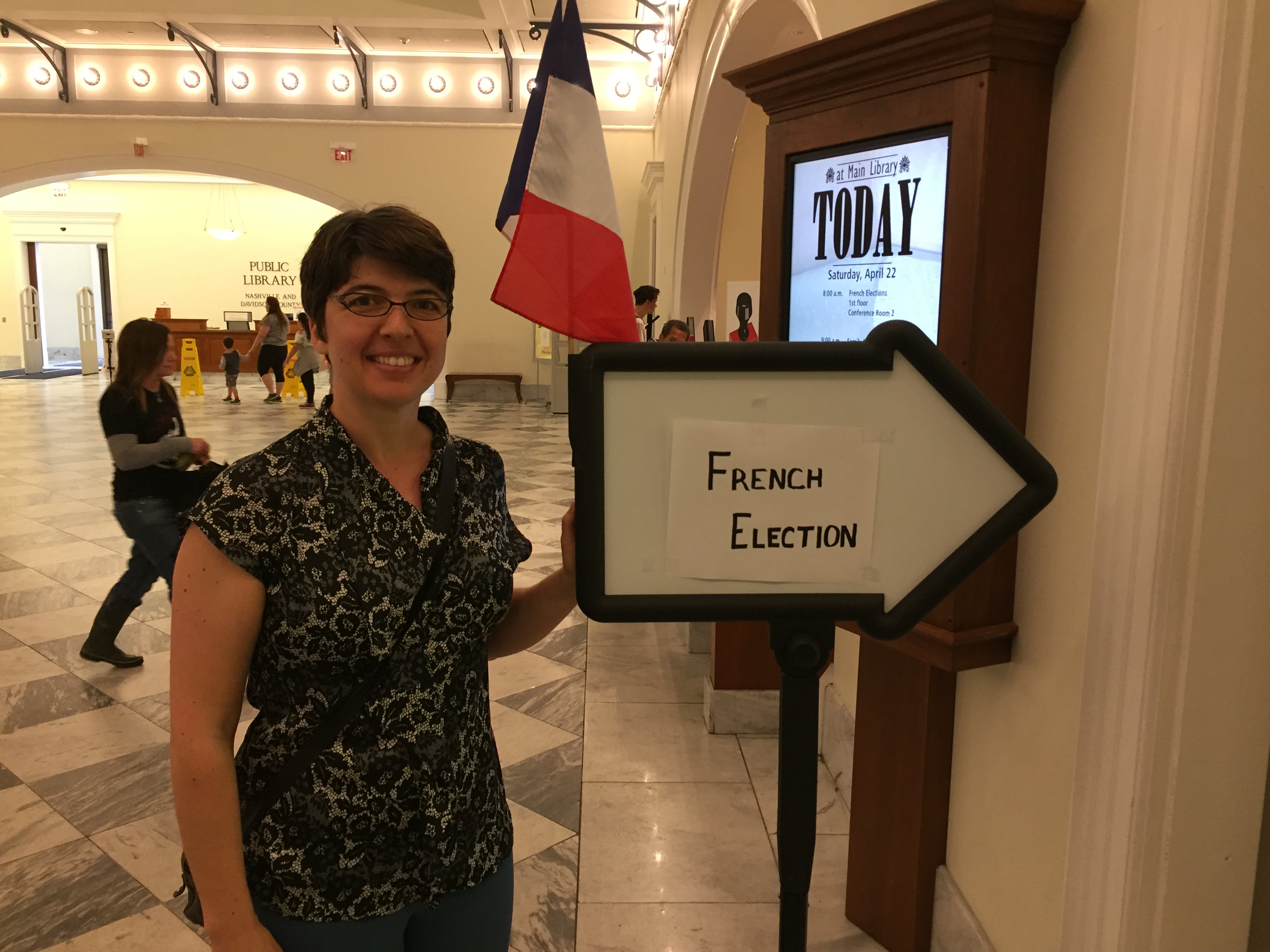For months now, I have been following the French presidential election and writing articles in comprehensible French for teachers who wish to expose their students (even Novice ones) to this important event. In the context of Brexit, the French presidential election has become critical for France, the European Union, and to some extent the world, so I have decided to throw a sale on my presidential bundle, in order to reach even more teachers and students of the French language and culture. I have a long night ahead of me writing at least two more articles on this “amazing race” so please excuse this somewhat clumsy post 🙂
And now without any transition whatsoever, here is a quick summary of how this first election round went and why it is so historic.
Along with one million French citizens living abroad (2% of the electoral vote), I voted in the French presidential election yesterday. I had to drive to Nashville TN but once I got there, the process was very quick and easy. Not everyone was that lucky. According to the newspaper Le Monde, a lot of French citizens living abroad had to wait for hours before being able to cast their votes.

(source: https://twitter.com/karyn_poupee)
Today another roughly 75% of French voters headed to the polls for a very uncertain first round of voting. There were eleven (11) candidates, with four (4) in the lead: Jean Luc Mélanchon (Extreme Left wing), Emmanuel Macron (Center), Francois Fillon (Right wing), and Marine Le Pen (Extreme Right wing).
Emmanuel Macron, a mostly unknown young politician whose political ideas are “neither leftist nor rightist”, and Marine Le Pen, the head of the Front National party, European MP, and known for her anti-immigration and anti-European rhetoric, have now qualified for the second round. Mélanchon and Fillon finish very close behind them, showing how divided France is. What is particularly striking and historic about this election is that neither traditional party (Parti Socialiste and Les Républicains) was able to secure a candidate for the second round!
The socialist party, Francois Fillon, and other Right wing personalities have already asked their followers to vote for Emmanuel Macron against Marine Le Pen in the second round. Because there is no electoral college in France, every vote counts. Whichever candidate gets the most votes wins.
And finally for those of you who wonder how our voting process works, here is a quick recap. These pictures were taken by my brother in Paris, so feel free to share with your students:







Leave a Reply